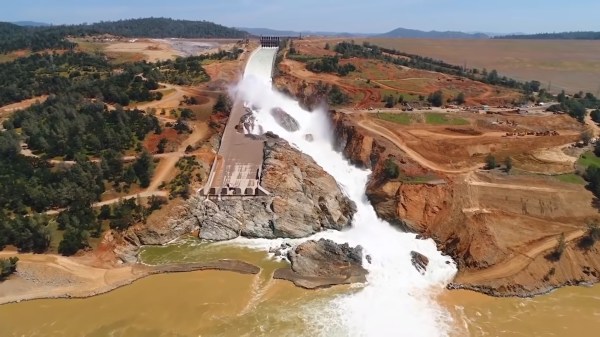Back when it first happened, we covered the Oroville Dam near-disaster. Heavier-than-expected rainfall in California back in early 2017 led to running the dam’s primary spillway at much higher-than-normal levels. February 17, 2017, the operators noticed something odd about the water flow down the spillway, and when they turned off water flowing down the spillway, it was made obvious that they had a major problem on their hands. Several chunks of concrete were missing, and the water had begun gouging into the earth beneath the spillway. It would need repairs before it was properly up to the task of discharging water, but it was still raining.
The rising water level in Lake Oroville put operators in a tricky situation, as they needed to discharge water in the least damaging way possible. They decided to use the emergency spillway to keep water levels at safe levels. Unfortunately, the secondary spillway began to deteriorate even more quickly than the primary had, and continued use could compromise the structure of the entire dam. The difficult decision was made to evacuate downstream residents, and sacrifice the primary spillway to drain the lake to 50 feet below the nominal full level. It worked, and effectively destroyed the bottom two-thirds of the spillway over those 3 months.
With the water at a safe level, the spillways could be repaired, a monumental nearly-2-year process in itself. We’ve covered all this before, but you may be left with the nagging question, what went wrong? [Grady Hillhouse], of the Practical Engineering channel, breaks it down for us in the video embedded below.
Continue reading “A Look Back On The Oroville Dam With Practical Engineering”












